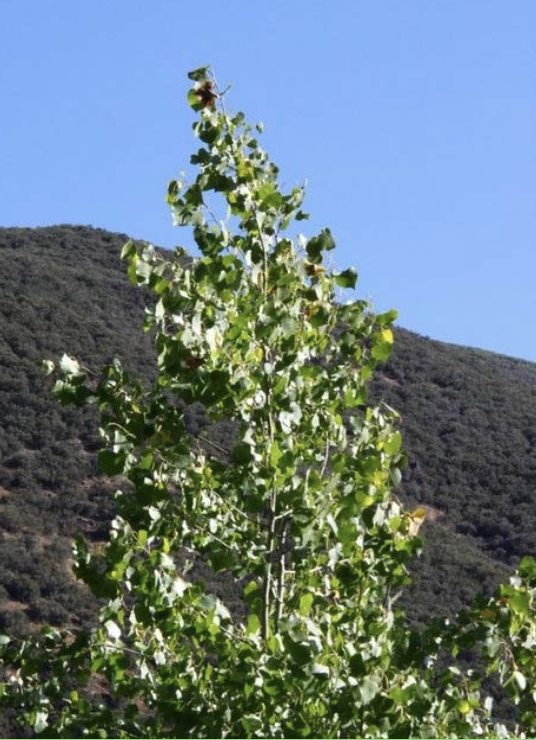Countless different colors of green, ample lush vegetation, and leaves fluttering in the breeze are the classic images of a riparian zone. Those iconic, rustling leaves likely belong to a venerable old cottonwood, standing guard over the smaller willows, alders, and shrubs growing along the stream bank. These images are what we expected on our first trip down the Tuolumne River. To our surprise, when we made our first trip to the river we discovered steep hill slopes, a narrow, sparse, riparian band, and apparently NO COTTONWOODS! Being nominated as the botanists of the group, we were intrigued and together embarked on a mission. Discover WHY so few cottonwoods are growing on the Tuolumne River.
We came back to the drawing board, did some research, and focused our attention on our next cottonwood expedition. Cottonwoods need three basic things in order to establish and grow: an upstream seed source, appropriate sediment for recruitment, and the proper river hydrograph, including scouring flows and a gradual spring snowmelt recession limb. Cottonwoods grow well in sandy and silty sediments, which are relatively rare along the bedrock Tuolumne River. They disperse their fluffy, white seeds during a small window of time in the spring and depend on very specific flow conditions, termed the ‘recruitment box.’(Rood et al. 2005) On our next trip we would try to determine which of these essential elements were lacking on the Tuolumne, leading to the paucity of cottonwoods.

Photo: Patrick Hilton
Off we went, determined to get to the root (haha!) of this problem. This time we tried to juggle paddling and cottonwood reconnaissance, which made for an interesting drop over Clavey Falls. From Meral’s Pool to New Don Pedro Reservoir we only counted nine different cottonwood sites, relatively evenly spaced along the river.
What we saw
(described by the nearest rapid or tributary)
- at South Fork (x2)
- above Ramshead
- below Lower India (several) - nothing in Clavey ?!?
- below Indian Bar
- above Surf City
- at Big Creek Flat
- near Devils Kitchen
- at North Fork
= 9 sites confirmed
After long deliberation, we felt that the best explanation involved all three of the cottonwood’s requirements, with the river hydrograph being the most important. We counted several prime cottonwood habitat sites while floating down the mainstem that did not contain a single tree. This suggested that a lack of suitable habitat and sediment was not the limiting factor in cottonwood recruitment. Also, because we saw several trees relatively evenly spaced along the river, there is apparently not a total lack of an upstream seed bank. Which left us to assume that the hydrograph on the mainstem Tuolumne rarely supports cottonwood propagation. However, this anecdotal evidence does not rule out any of the three potential hypotheses. In fact, we suspect that the low abundance of these trees in the Tuolumne system results from the interaction of a sparse seed bank, low amounts of sediment, and infrequent recruitment flows. This concludes our cottonwood adventure, but is the mystery solved?
References
Rood, S. B., G. M. Samuelson, J. H. Braatne, C. R. Gourley, F. M. R. Hughes, and J. M. Mahoney. 2005. Managing river flows to restore floodplain forests. Frontiers in Ecology and the Environment 3:193‐201.
